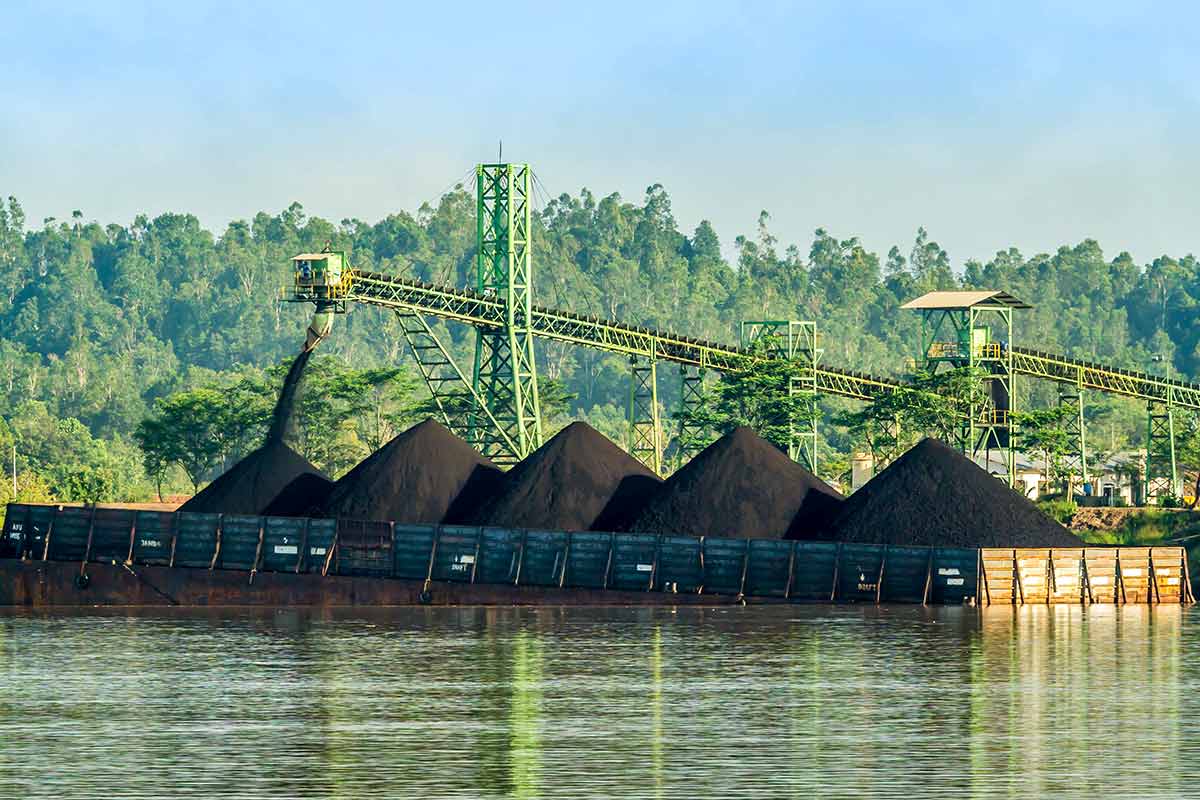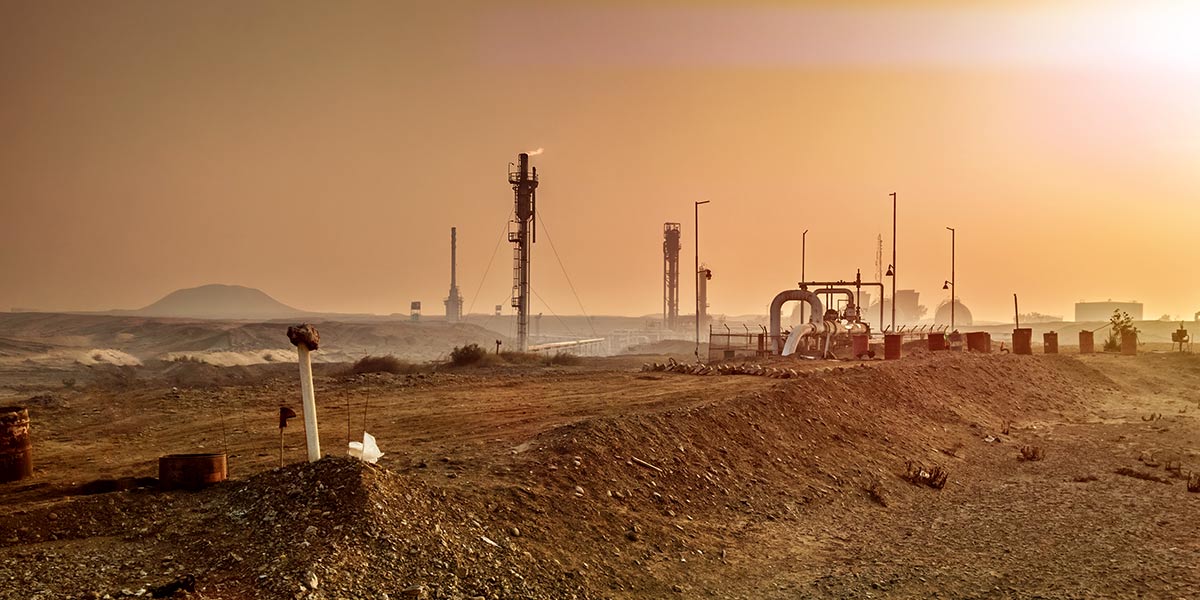Mike Disabato, Vice President, MSCI Research
Joe Stekli, Vice President, Science and Technology, Galvanize Climate Solutions
Key findings
- The airline industry’s embrace of sustainable aviation fuel (SAF) reflects both SAF’s potential to reduce roughly three-quarters of the carbon emissions associated with flying and the compatibility of SAF with planes currently in use.
- Scale will be critical to continue the deployment of SAF while also supporting technology development and commercialization of e-fuels and other alternatives.
- The supply of SAF made from used cooking oil and other biologically derived fats is constrained by the availability of feedstock, a problem that also limits the supply of low-carbon fuels based on synthetic feedstocks
2023 saw a flurry of excitement from the airline industry.
First, a Virgin Atlantic Boeing 787 flew from Heathrow Airport to Kennedy Airport on 100% sustainable aviation fuel (SAF), becoming the first commercial flight to do so. Then a Gulfstream G600 flew, with considerably less fanfare, from Savannah, Georgia to London, becoming the first private jet to make the transatlantic flight using SAF alone. Each flight cut around 70% to 80% of the typical carbon emissions associated with flying, signaling to the world that sustainable fuels are here and that planes can fly on them.
The push to decarbonize matters for an industry that contributes about 2% (about 800 megatons) of global greenhouse gas (GHG) emissions annually.[1] To put this in context, the annual emissions from aviation exceed the emissions of most countries, including Canada, Germany and South Korea.
Decarbonizing air travel aviation is difficult. Despite the early progress signaled by demonstration flights, industry leaders continue to be concerned about the current lack of investment in SAF, which supplies less than 1% of global aviation fuel today.[2] For SAF to supply the nearly 100,000 flights that take off and land every day all over the globe, much remains to be done.
SAF’s allure lies in its congruence with current aircraft: SAF is a drop-in fuel — meaning airlines can use it right now as a blend with conventional jet fuel.[3] This aspect is critical, as the current median age of the industry’s fleet is a relatively youthful nine years, less than half the typical useful life of commercial aircraft.[4]
Battery- or hydrogen-powered planes — another of the industry’s emerging solutions to slash emissions, though further than SAF from achieving commercial scale — would require replacing aircraft, something that would be difficult to do in time to achieve the industrywide long-term aspirational goal of net-zero by 2050.
This embrace of SAF is also the most direct path to net-zero: Of the tools the industry has at its disposal in 2024, drop-in fuels such as SAF have the largest potential impact on reducing residual carbon dioxide (CO2) emissions.[5] Both the airline industry and its governing bodies — the trade association International Air Transport Association (IATA) and the U.N.’s International Civil Aviation Organization (ICAO) — as well as aircraft manufacturers identify SAF as the main tool for achieving aviation’s net-zero goal (Exhibit 1) and as a way for airlines to satisfy some of the emissions abatement requirements set in the Carbon Offsetting and Reduction Scheme for International Aviation (CORSIA).[6]
Exhibit 1: The aviation industry’s mix of low-carbon tech to be net-zero in 2050
Source: ICAO Environmental Report 2022.
For now, an additive
Some airlines are further along than others in sourcing and securing SAF. Currently close to two-thirds (61%) of airlines have stated they are already blending SAF with conventional jet fuel for a small fraction of flights.[7] Still, only 41% of carriers have published a target to use a defined percentage of SAF by 2030, the date SAF steering committees and regulators have set as an interim target for ramping up production (Exhibit 2).[8] Those airlines not actively working to secure supplies of SAF might be at a disadvantage in the coming years compared with airlines already shoring up the limited SAF supply.
Exhibit 2: Airlines with an SAF by 2030 target and a net-zero target
*Low-cost airlines according to the IATA. Source: MSCI ESG Research and company disclosures. Data as of November 2023. Airlines included were those that we have collected revenue passenger kilometers (RPK) data for as of December 2023. SAF use in 2030 estimated using RPK of airlines as of 2022 and reported or estimated fuel use by airlines in 2022 multiplied by the fuel-use-to-RPK ratio compounded by a 3% growth rate up to 2030. The 3% rate is the ICAO estimation of growth in global air travel per annum. Fuel was converted from liters to metric tons using density value of 0.81 kilograms per liter for sustainable aviation fuel.
While the largest carriers have set both SAF and net-zero targets, two airlines in particular — Lufthansa and Turkish Airlines — stand out for their lack of detailed disclosure while requiring large volumes of SAF to stay in line with industry peers’ decarbonization efforts.[9] Another quandary is how low-cost airlines (those with an asterisk in Exhibit 2) can square SAF usage with their business models. Low-cost airlines such as Frontier Airlines and Gol Linhas Aéreas Inteligentes focus on minimizing operating costs to offer customers the lowest possible fare compared to competitors. CORSIA requirements and SAF’s high cost relative to conventional fuels could create significant challenges for low-cost carriers. Southwest, EasyJet, Cebu Air, JetBlue and Jet2 stand out from their peers in setting 2030 usage targets for SAF.
2030 will mark a critical juncture for SAF scale-up. The industry is banking on a massive increase in the use of SAF thereafter that would reduce emissions much more than the 10% target the industry has set for 2030 (Exhibit 3).[10] If each company in MSCI ESG Research’s coverage met the industry’s current target, Scope 1 carbon emissions (which constitute between 70% and 80% of airlines’ total emissions footprint) would be reduced by little more than 8% in 2030, according to our analysis.
Regardless of SAF usage, airlines are likely to emit more in 2024 than ever before due to predicted passenger growth rates. Most airlines that are participating in Phase 1 of CORSIA in 2024 could be required to adhere to the mandate’s CO2 emissions reduction requirements: Airlines must not emit above 85% of their 2019 CO2 emissions from flights between participating countries.[11] The SAF usage will lower airlines emissions and lessen the financial burden placed on airlines by CORSIA from 2024 onward, but the industry will need to rely on production processes that are not yet at scale for it to increase its SAF usage and “flatten the curve.”
Exhibit 3: Absolute emissions continue to rise even with predicted SAF use
Companies used for chart are those in the MSCI ACWI Index as of December 2023 not for the airline industry as a whole. Source: MSCI ESG Research, Company Disclosure. Data as of December 2023. Estimates for the Scope 1 emissions with and without SAF use is found by increasing 2019 Scope 1 emissions by 3% per annum as predicted by ICAO and assuming SAF will reduce emissions from fuel use by 80%. The “2019 Scope 1 emissions” line is meant to be a proxy for the CORSIA emissions benchmark. The actual CORSIA emissions benchmark (85% of 2019 emissions) will be different from what is shown above.
Airlines cite both the immaturity of the market for SAF and its price as the main barriers to boosting the blend rate of SAF between now and 2030. Though a number of carriers have forged partnerships with producers that are designed to boost supply, SAF production in 2022 was just 0.24 megatons, a mere 0.1% of the overall volume of conventional jet fuel.[12] Also, SAF is currently expensive, with an average price of USD $2,400/t in 2022, two and half times higher than conventional jet fuel.[13]
That’s not to suggest that policymakers aren’t priming the pump. The European Union’s ReFuelEU Aviation regulation requires suppliers of aviation fuel to scale supply at EU airports to make sustainable aviation fuel at least 2% of overall fuel supplied by 2025, as a step toward meeting 70% of overall volumes by 2050.[14] Producers of sustainable aviation fuel in the U.S. are eligible for a tax credit starting at USD 1.25 per gallon, provided the fuel reduces GHG emissions by 50% compared with conventional alternatives.[15]
The value in scaling and incentivizing multiple options
SAF is made from either biological feedstock (anticipated to be mostly from plant feedstocks at scale) or by synthesizing clean hydrogen (H2) and combining it with captured CO2, which produces so-called synthetic or e-fuels. The environmental benefits from SAF are not from its combustion, which releases roughly the same amount of CO2 as conventional jet fuel.[16] Rather, the benefits flow from the reductions in emissions achieved upstream in the SAF value chain, such as the absorption of CO2 from the atmosphere during feedstock growth, and a reduction in the formation of contrails (contrails may cause a warming effect comparable to an additional 60% of total aviation CO2 emissions) due to the lower aromatic content of SAF (aromatic hydrocarbons produce more small particulates when burned).[17]
The most common SAF production pathways are classified into the following categories: gas-to-jet fuels (such as the GFT process), oil-to-jet fuel (such as the HEFA processes), sugar-to-jet fuel (such as the HFS-SIP processes), alcohol-to-jet fuels and e-fuels. Each category is at a different level of maturity, requires varying inputs, and yields different potential levels of GHG reduction, as shown in Exhibit 4.
Exhibit 4: Overview of various SAF production pathways
| Technology status | Feedstocks | Approved max blending limit (%)* | GHG reduction potential (%) | Producers[*] | |
|
Hydro-processed esters and fatty acids (HEFA) |
Mature | Oil crops, used cooking oils | 50% | 73-84% | Neste Oil, ENI, World Energy, SkyNRG |
|
Alcohol-to-jet (ATJ) |
Commercial pilot | Corn, sugarcane, cellulosic biomass | 50% | 85-94% | Gevo, Red Rock, LanzaJet, Honeywell |
|
Gasification Fischer-Tropsch (GFT) |
Commercial pilot | Cellulosic biomass, municipal solid waste | 50% | 85-94% | Fulcrum, Velocys |
|
Hydroprocessed Fermented Sugars (HFS-SIP) |
Lab | Corn, sugarcane, lignocellulosic biomass | 10% | No data | Amyris |
|
Electrolytic e-fuel |
Commercial pilot | H2, CO2 | 50% | Up to 99% | Twelve, Dioxcycle |
|
Thermochemical e-fuel |
Commercial pilot | H2, CO2 | 50% | Up to 99% | Lydian Labs, Sunfire, Caphenia |
[*] This is not intended to be a complete list of producers. Source: MSCI Sustainability Institute. Table shows a snapshot of SAF pathways with approved blending capability, as defined by ASTM. It is not inclusive of all potential SAF pathways.
The HEFA pathway is the only option facilities are already routinely using to produce billions of liters of biofuel, often in the form of renewable diesel.[18] With limited incremental investment and policy incentives, these HEFA facilities could transition their total capacity to 15% SAF, putting them at the forefront of SAF supply over the next five to 10 years.[19]
This approach could be the most realistic way to quickly supply airlines with cost effective SAF in the near term as other technology pathways continue to mature and scale.[20] Still, HEFA is constrained by the availability of feedstock, a problem that will also limit fuels produced via the ATJ and GFT pathways reliant on cellulosic (i.e., non-fossil) feedstocks as well.
The exhibit below illustrates the global technical potential for HEFA and cellulosic-sourced SAF using a range of technology performance and feedstock availability assumptions (Exhibit 5).[21] Notably, much of the feedstock requires agricultural practices not widely used today (cover crops and the collection of them, purpos-grown oils on already-disturbed lands), or collections of waste not widely collected today — creating logistical challenges that may make certain levels of incremental supply economically unfeasible, despite their hypothetical potential. Given the constraints on cost-effective and readily available feedstock supply, we believe the volumes of SAF available to airlines in the future using these production pathways is likely overestimated using this methodology.
Exhibit 5: SAF availability by biomass feedstock
Source: Calculations by Galvanize Climate Solutions using data from WEF and McKinsey (Ibid)
E-fuels are not constrained by feedstock in a practical sense as the process involves using hydrogen produced either through electrolysis of water and CO2 from direct air capture; the capture of emissions from bio-conversion processes (e.g., ethanol production, combustion of biomass); or from fossil fueled processes, though this latter pathway might reduce the emissions benefits of e-fuels. E-fuel production also requires significant amounts of energy, which must come from clean energy sources which will necessarily also require a high level of capital investment.[23]
More than 400 million metric tons of SAF will be required in 2050 for the industry to meet its decarbonization target.[24] Given feedstock supply constraints and practical limits, the airline industry cannot meet these volumes alone through SAF pathways that are mature today — specifically, HEFA and cellulosic-sourced fuels. Near-term support for scaling these pathways will be critical to drive cost-effective deployment of SAF to meet near-term airline industry decarbonization targets. However, additional support — both for research and for scale-up — of alternative SAF pathways such as e-fuels is also critical. Ultimately, many available solutions will be needed to ensure sufficient SAF supply to enable aviation to achieve net-zero by 2050.
Galvanize Climate Solutions is a climate-focused global investment firm delivering capital and expertise to accelerate climate solutions and create long-term value for investors. Founded by Katie Hall and Tom Steyer, Galvanize invests across asset classes, including venture capital and growth equity, public equities, and real estate.
The authors thank Umar Ashfaq and Brian Browdie from the MSCI Sustainability Institute for their contributions to this post.
[1] IEA. “Tracking Clean Energy Progress 2023.” IEA, 2023, License: CC BY 4.0
[2] Press Release No: 69. “SAF Volumes Growing but Still Missing Opportunities.” IATA, Dec. 6, 2023
[3] Some aircraft require retrofits to achieve the necessary blend rates of SAF and conventional fuel. But those retrofits are relatively easy compared to the entirely new plane design that can be required for electrification or hydrogen aircraft designs.
[4] This is not including orders already on the books of Airbus and Boeing from major airlines for their current generation of aircraft. Airbus and Boeing have order backlogs exceeding 10,000 aircraft according to Leeham News, as of November 2023.
[5] ICAO. “Report on the Feasibility of a Long-Term Aspirational Goal (LTAG) for International Civil Aviation CO2 Emission Reductions.” International Civil Aviation Organization, March 2022.
[6] Both Boeing and Airbus have both embraced SAF as a main solution to decarbonize air travel. Though each are still investing heavily in the development of hydrogen and electric powered aircraft, at different scales. At a high level, CORSIA caps the net CO2 emissions of international flights between participating countries at 85% of the individual airline’s 2019 baseline emissions for the years 2024 to 2035.
[7] According to MSCI ESG Research data and via company disclosures, as of November 2023.
[8] Sixteen of the 49 companies in our coverage pledged 10% by 2030; China Airlines pledged 5%, JET2 pledged 4%, and Norwegian Air pledged 20% by 2030. See the Clean Skies for Tomorrow coalition and the EU’s RefuelEU aviation rules as part of its “Fit for 55” package. See also, Factsheet, “Net zero carbon 2050 resolution.” IATA, June 2023.
[9] Lufthansa does have a robust set of partnerships and disclosures on its SAF production and use. But the airline stops short of disclosing a specific percentage of planned SAF usage by 2030. While China southern could also be considered in that category, China has not yet officially signed onto CORSIA.
[10] Factsheet. “Net zero carbon 2050 resolution.” IATA, June 2023.
[11] The ICAO has required all member states to establish national policies and a regulatory framework for the compliance and enforcement of CORSIA. The effect of the regulation will vary by region and national law.
[12] International Air Transport Association, 2019. “Sustainable aviation fuel output increases, but volumes still low.” All Rights Reserved. Available on IATA Economics page.
[13] Ibid
[14] “European Green Deal: new law agreed to cut aviation emissions by promoting sustainable aviation fuels,” European Commission, April 26, 2023
[15] “Sustainable Aviation Fuel Credit,” Internal Revenue Service, available at irs.gov
[16] There are also benefits to air pollution because SAF burns cleaner than traditional jet fuel. But the fact that the emissions reduction is from the value-chain and not combustion, means not all SAF types are created equal. Some waste feedstocks, such as those from palm oil plantations, could actually be more pollutive than fossil fuels.
[17] Voigt, C., Kleine, J., Sauer, D. et al. Cleaner burning aviation fuels can reduce contrail cloudiness. Commun Earth Environ 2, 114 (2021). https://doi.org/10.1038/s43247-021-00174-y
[18] Susan van Dyk & Jack Saddler, “Sustainable aviation fuel/biojet technologies: commercialization status, opportunities and challenges.” IEA Bioenergy Task 39, The University of British Columbia (UBC), July 13, 2021.
[19] Ibid
[20] Ibid
[21] WEF and McKinsey, Clean Skies for Tomorrow: Sustainable Aviation Fuels as a Pathway to Net-Zero Aviation, INSIGHT REPORT, November 2020.
[22] Ibid.
[23] Susan van Dyk & Jack Saddler, “Sustainable aviation fuel/biojet technologies: commercialization status, opportunities and challenges.” IEA Bioenergy Task 39, The University of British Columbia (UBC), July 13, 2021.
[24] IATA, Energy and New Fuels Infrastructure Net Zero Roadmap


